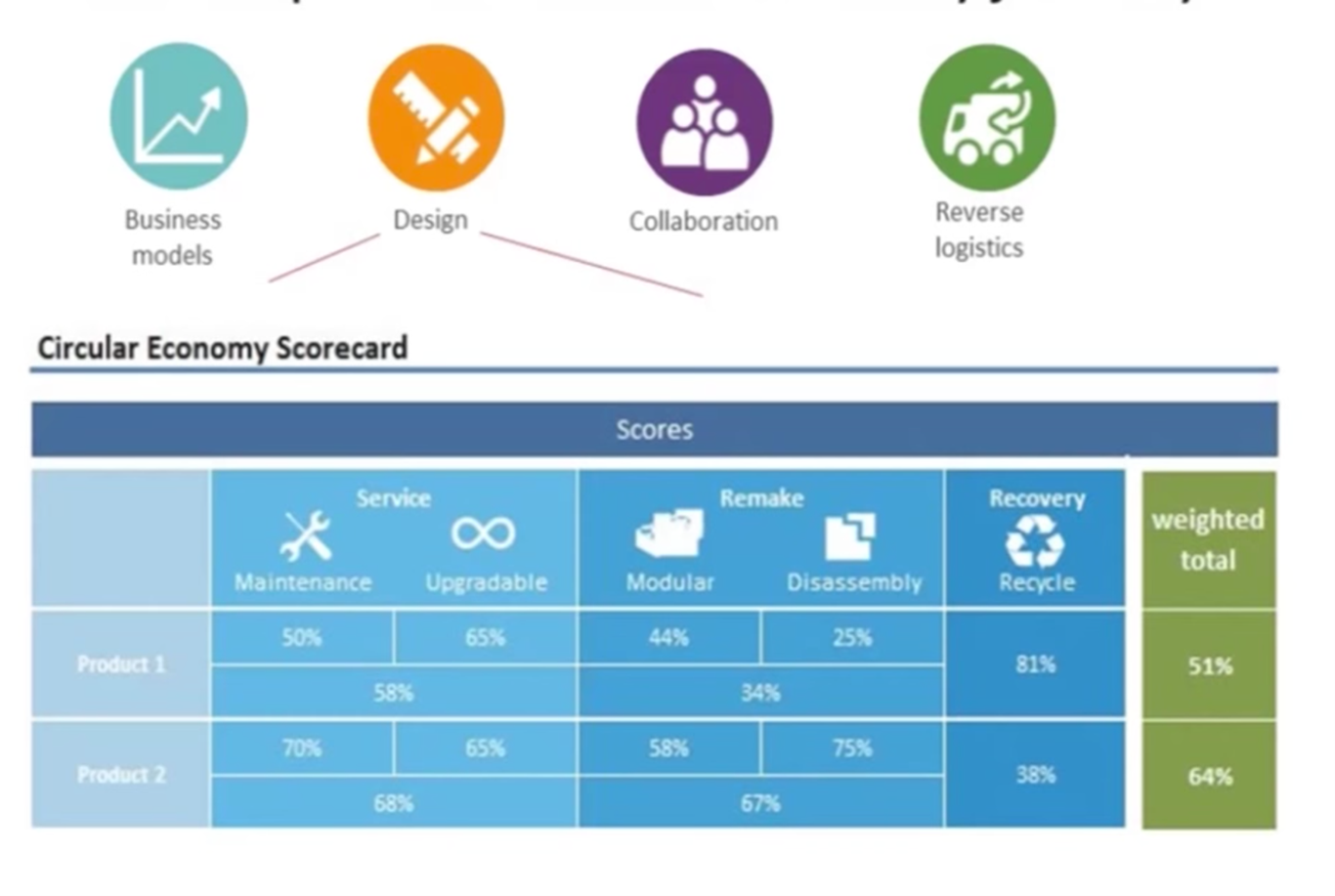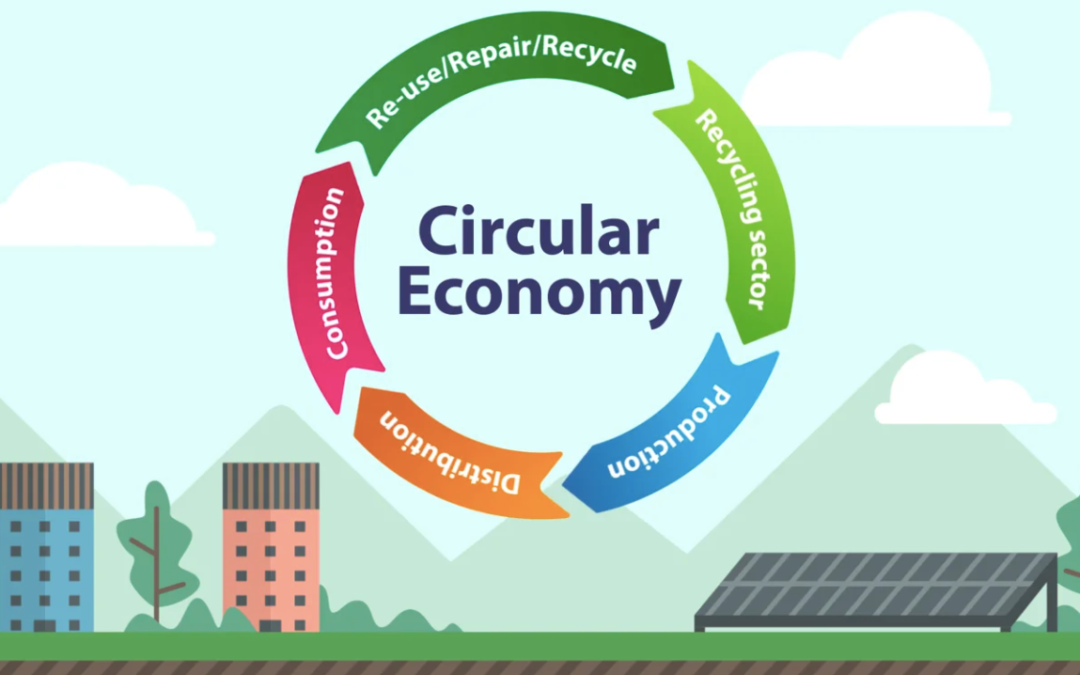The Problem
Per-capita consumption in developed counties has exceeded the natural resources theoretically available to each world citizen, and consumption in developing countries is catching up. On a finite planet, a “linear” flow (resources ending in landfill) is inherently unsustainable.
The Solution
Life on earth is able to exist because the planet works in a “circular” manner; a concept now being applied to business. Circular businesses models gain value from brand awareness, and materials recovery. A product can be seen as a ‘bank’ for raw materials.
McKinsey estimates shifting towards circularity could add $1 trillion to the global economy by 2025 and create100,000 new jobs. Circular examples include photocopier rentals where manufacturers recover and re-manufacture machines, and billion dollar multinational Interface Flooring who increased profitability by recovering used carpet.
End of Life responsibility is also important (e.g. take-back incentives/models, recycling infrastructure, upcycling, partnerships, servicisation models) and can lead to a larger repair-and-servicing sector which creates employment and increases company revenue.
Examples of Circular Economy
One of the earliest adopters of circular economy resource recovery were photocopier rentals, where manufacturers recover and remanufacture machines at their end of life.
Another famous example is Interface Flooring - a multi-billion dollar company who increased profitability by recovering old carpet and turning it into new.
Or Patagonia, a global clothing brand with > $750 million in sales which repairs 40,000 items a year in its US factory, and teaches customers how to repair clothes themselves.
Elements of a Circular Economy
Elements of a circular economy include;
Servicing – maintaining and extending the lifespan of products. This can include upgrading parts when technology improves, cleaning and preventative maintenance, and repairing.
Refurbishing – when a product reaches end of life – there may be ways to refurbish them so they can continue working, or even upcycle it into a different product
Parts harvesting – if a product is truly at the end of its life, then parts may be harvested for use in other applications, making new products, used as spares for refurbishing, etc.
Recycling – all materials will ideally be recycled back into the economy
Circular Product Design for Lighting -Tips
· Focus on recoverability not just novelty and style
· Use recyclable materials
· Use modular design so that parts can be replaced / upgraded / dissembled - we don’t buy iPhone 6 because our iPhone 5 is broken, we buy it because we want the rapidly changing innovation… lights will become better than LED… so it could almost be argued that making lights which can be upgraded is even more important than making lights that last a long time
· Design so that repair / upgrade /disassembly is easy
· Use standardised parts e.g. screws not rivets, non-propriety plugs
· Use low voltage parts so non-qualified electricians can fix or upgrade products
· Consider using recycled materials for manufacturing
· Optionally use biodegradable materials
In 2014 the IEA 4E SSL Annex published a review (http://ssl.iea-4e.org/health-environment/lifecycle-assessment) that examined nine life-cycle assessment (LCA) reports published between 2009 and2013 (including the recent series of reports by the US Department of Energy)that compare LED lamps and luminaires with conventional sources (IEA 4ESSL2014B). The review found that on average, 85% of the environmental impact of an LED product is linked to the use phase, while the remaining 15% is shared mainly between manufacturing and end-of-life treatment. The environmental impact of the transport phase only accounts for 1% to 2%.
LED components with the highest contribution to environmental impact include aluminium components (e.g., heatsink), electronics (the driver) and LED packaging. The recent development and use of ceramic heat sinks (replacing aluminium) in LED products is expected to help to reduce the environmental impact if broadly adopted. The production of an LED electronic driver also has a significant impact, as it often includes many discrete components as well as integrated circuits, and many processes involved in the manufacturing of a printed circuit board. Of interest is the conclusion of the US DOE study (US DOE 2012) that one area where LEDs may currently have a marginally higher impact than CFL lamps is hazardous waste disposal due to the manufacturing of the large aluminium heat sink used in LED lamps.
Although LEDs contain recyclable components and materials, LED products are often not recycled. The end-of-life for LED products is thus comparable to other electronic waste. These wastes contain rare materials such as gallium and indium that are considered strategic metals; however standard waste recycling processes can’t recover these materials today. With or without recycling, the impacts of the end-of-life of LED products appear to be very low compared to the use stage. However investigations into the recycling LED products to extract valuable materials would further reduce environmental impact.
Example Rating System for Circular Products:

End Of Life Responsibility
Closed loop models require brands to extend responsibility to the ‘end of life’ phase (i.e. take-back incentives/models, recycling infrastructure, partnerships) and not expect end users to manage the process themselves.
They must also consider how product scan be upcycled rather than just recycled. This may extend across industries(e.g. furniture made from old tyres).
This is leading to a larger repair-and-servicing sector (similar to the days when toaster repair was a legitimate occupation).
Benefits to Suppliers;
· Publicity for being innovative
· Long-term relationships with clients
· Increased revenue streams (e.g. 2ndhand-market, service market)
· Keeping physical components (i.e. capital) in the value chain for re-use
Benefits to End Client;
· Publicity for being innovative
· May be rewarded financially for giving back products at end of life
· Potential lower maintenance
· Lower environmental impact
